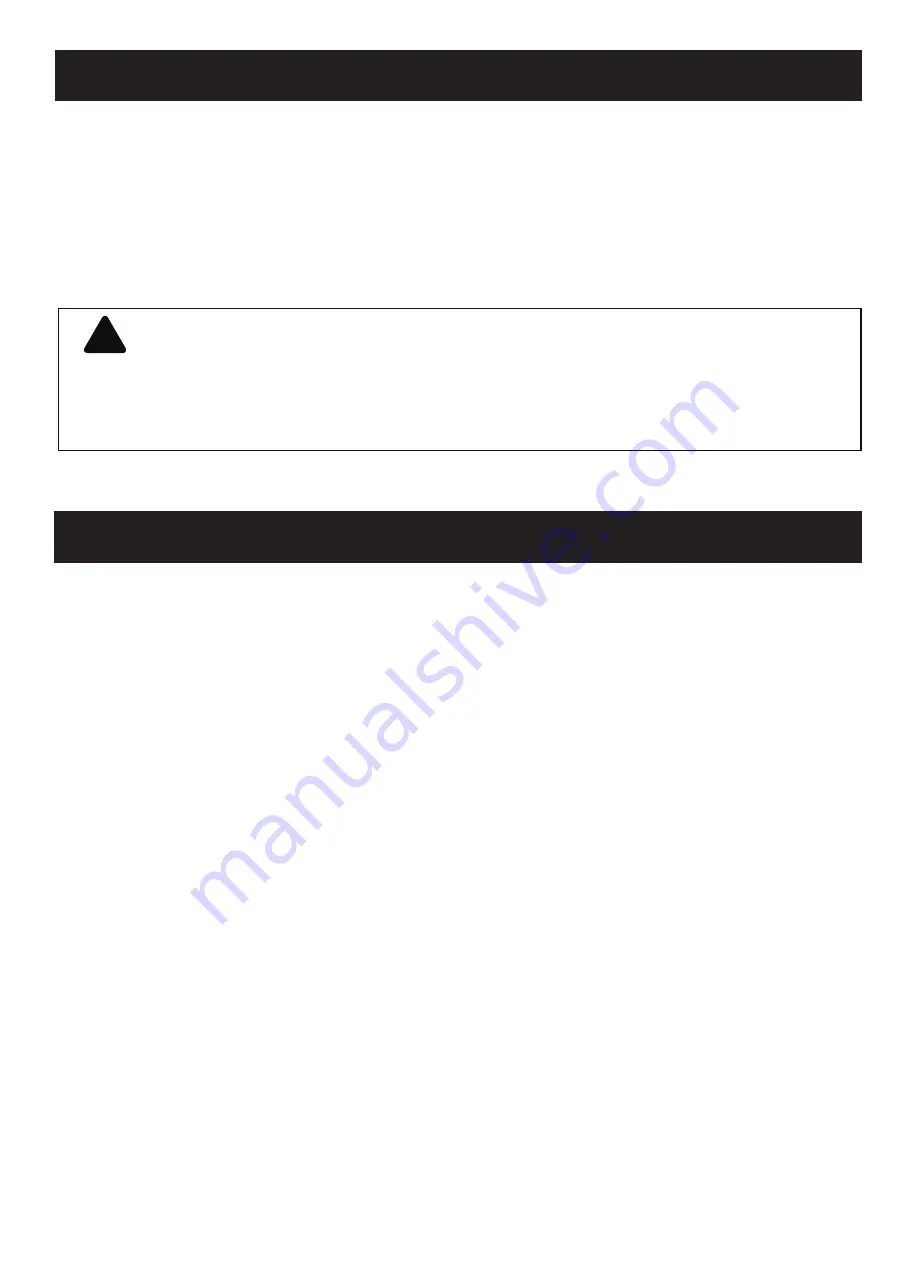
5 / 20
IMPORTANT SAFETY INFORMATION
• Before each use, remove the lava rocks. Examine the burner and its components. If dirty, clean
with a soft brush and soapy water solution. Examine the area around the burner; any dirt or
foreign material, such as spider webs or nests in this area should be removed. If it is evident that
the burner is damaged, the fire table must not be used. The burner assembly cannot be replaced.
Please contact Ocean Rock USA at 800-678-7294 for technical support.
• Place the hose out of the pathways where people may trip over it. Do not place the hose
in areas where it may be subjected to accidental damage.
WARNING
!
This outdoor fire table is for use with liquid propane (LP) gas only. The conversion to or attempted
use of natural gas in this outdoor fire table is dangerous and could result in serious personal injury,
or property damage.
ATTENTION: Any alteration of the outdoor fire table that is not specifically directed in the operations
manual will void manufacturer warranty.
PROPANE (LP) DANGERS AND WARNINGS
LP Gas
LP gas is flammable and hazardous if handled improperly. Become aware of the characteristics
before using any LP gas product.
Propane Characteristics
• Flammable, explosive under pressure, heavier than air and settles in pools in low areas.
• In its natural state, propane has no odor. For your safety, an odorant has been added.
• Contact with propane could burn your skin.
• Propane is extremely flammable and hazardous if handled improperly.
LP GAS WARNINGS
• Cylinders must be stored outdoors in a well-ventilated area out of reach of children.
• Disconnected cylinders must have threaded valve plugs tightly installed and must not be stored
in a building, garage or any other enclosed area.
• Never use a propane cylinder with a damaged body, valve, collar or footing.
• Dented or rusted propane cylinders may be hazardous and should be checked by your propane
gas supplier.
• Be sure to use only one 20 lb (9.1 kg) LP gas cylinder with a Type 1 valve with this appliance as
required by the American National Standards Institute (ANSI) and the Canadian Standards
steering Committee. Only tanks marked “propane” may be used.
• The LP gas supply tank must be constructed and marked in accordance with the specifications
for LP gas LP gas tanks of the U.S. Department of Transportation (DOT) or the National Standard
of Canada, CAN/CSA-B339, LP gas tanks, Spheres and Tubes for the Transportation of
Dangerous Goods and Commission.
• LP gas tank must be arranged forvapor withdrawal.






































